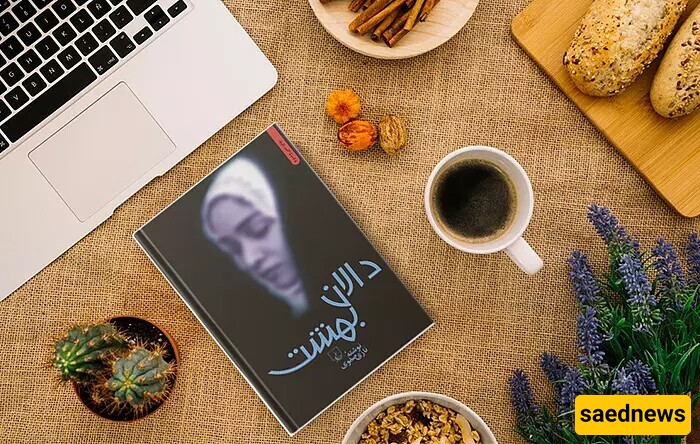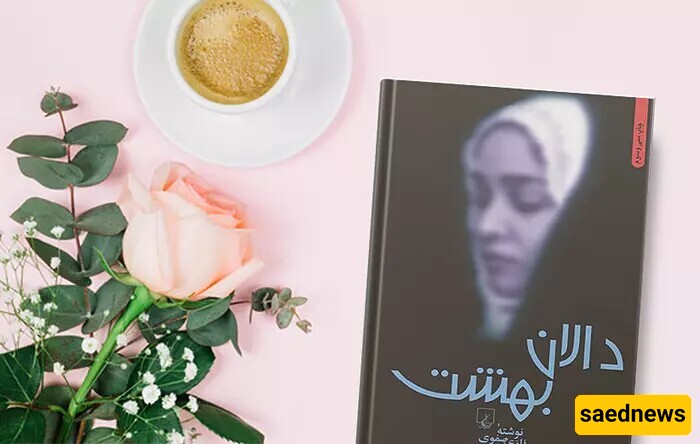Romantic literature is one of the most popular genres, and it's rare to find books that don't include a romantic and emotional story. Many of them describe union, while others recount separation and parting. "Dalan-e Behesht" by Nazi Safavi is another such romantic story.

According to the family magazine service of Saed News, the noteworthy aspect of this story is that, unlike the usual clichés, it is narrated by a girl who tries to describe her mistakes and analyze her wrong behaviors in her emotional relationship. With her honest narration, she evokes a sense of empathy in the reader.
Nazi Safavi, in her book "Dalan-e Behesht," tells the story of a girl from a merchant family named Mahnaz. Mahnaz grows up in a religious family and lives comfortably. The neighbor's son, Mohammad, loves her dearly. Mohammad proposes to Mahnaz when she is only 17, and they start their married life. However, Mahnaz's young age leads to immature behaviors. Her naive, emotional, and cultural behaviors cause their relationship to fall apart. Mohammad emigrates abroad after the divorce. During the years he is away, Mahnaz reflects on her mistakes in their marriage and strives to develop her character. Mohammad returns to Iran after eight years. They meet again and realize they still love each other deeply.
Nazi Safavi, an Iranian contemporary author, was born in 1967 in Tehran. She enjoys reading psychology books and classic Persian literature, like Hafez and Rumi's Masnavi. Safavi started writing at a very young age but officially entered the Iranian publishing and literature market in 1999 with her novel "Dalan-e Behesht."
She does not strictly adhere to writing rules and principles, preferring to rely on her instincts rather than following any particular school of thought. She says, "Writing for me is not a job. It couldn't compel me. It wasn't something I achieved; it was love. I felt it was a beautiful tool to communicate with many people. These people who claim to have cultural concerns...they don't. Solving these concerns is not important. Everyone says they have cultural concerns. Where are your cultural concerns? I don't claim to be a writer, so I am at ease. I have attended literary and intellectual gatherings discussing books but never saw myself as a writer based on their definitions. Writing is creativity; it just comes to you. It forces you to write. You cannot force yourself to write; otherwise, it becomes unremarkable."
After "Dalan-e Behesht," Safavi published "Barzakh Amma Behesht," which attracted many readers, and completed her trilogy with "Ta Behesht Rahi Nist." She also notes that her books' wholesome and relatable nature makes them accessible to Iranian readers: "My mind censors itself. It has a particular modesty about certain things."
Mahnaz, the story's narrator, transitions abruptly from her teenage and playful life to marital life with its commitments, without understanding it. However, this story does not follow typical clichés. Mahnaz is not forced into marriage by her family or due to poverty; she willingly marries Mohammad. Initially, the sweet and secure environment between them and their families is depicted. Then, the problems between Mohammad and Mahnaz are introduced. Unlike Mahnaz, Mohammad is mature and experienced. Despite growing up in a traditional family and holding traditional beliefs, he approaches marital issues and Mahnaz's mistakes logically. Mahnaz's repeated mistakes eventually lead to their divorce. After the divorce, unlike typical romantic stories where both parties find new partners, Mahnaz focuses on her mistakes. The divorce leads Mahnaz to self-discovery and helps her address her weaknesses that caused their breakup.
Another positive aspect of the book is the creation of realistic and multi-dimensional characters. People who are not entirely good or bad but are not immune to errors and mistakes. This makes the characters very believable, allowing readers to easily connect with them and follow the story.
Safavi has said about her characters, "Maybe the love I had for my grandmother has transferred to Khanom-Joon in 'Dalan-e Behesht'; her mischief and witty remarks. I am glad Khanom-Joon is delightful. Everyone loves her, regardless of gender or age; everyone loves her."
The opinions about the book are not all positive. Many do not consider the book's perspective on the characters' divorce and their sociological issues as based on psychological and educational theories but rather as the author's personal views. Therefore, these critics believe the book is not an educational work. Another point of criticism is the portrayal of a dependent woman in an Iranian family, a woman who lacks identity and meaning without a man's presence. Additionally, the book has a negative view of traditional Iranian women, which contradicts its portrayal of a dependent woman.
Mahnaz says in part of the book, "There's no feeling in the world more beautiful than knowing you belong to someone and are dear to someone," showing her sense of dependency and attachment. In another part of the book, Mohammad tells Mahnaz that he doesn't want her to be like old-fashioned women who only stay at home, expressing his critical view of traditional Iranian women. In response to these criticisms, the author has said, "If we just preach and say this behavior is bad, it won't help. We need to write about these people so they might learn."


